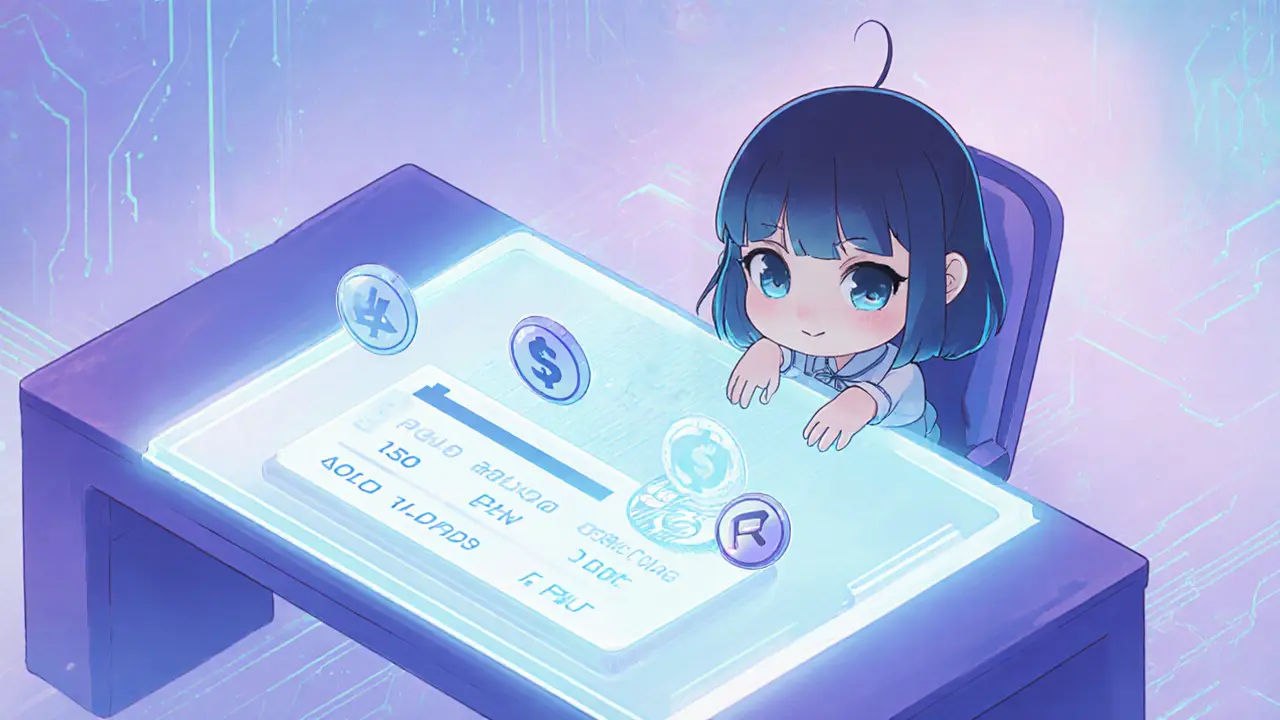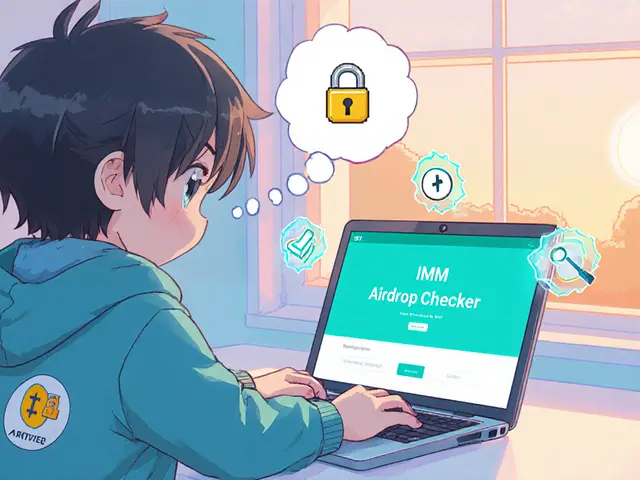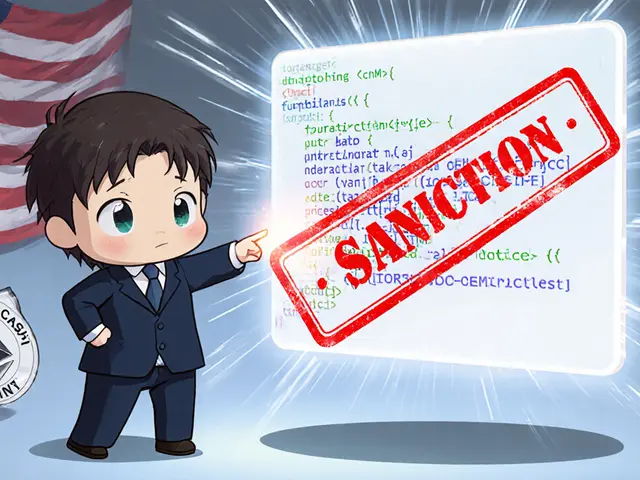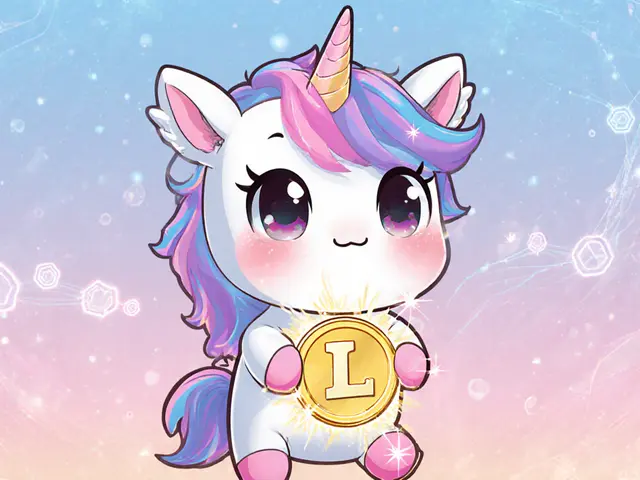Raydium DEX Fee Calculator
Raydium charges a flat 0.25% fee on all trades, regardless of trade size or market conditions. This fee is split between liquidity providers and the RAY token treasury.
Unlike some DEXs that offer variable fees or fee-free promotions, Raydium provides consistent pricing which helps traders plan their costs more accurately.
Looking for a fast, cheap way to trade crypto on Solana? Raydium review gives you the inside scoop on how the platform works, what you’ll pay, and whether it can beat the big names in decentralized finance.
Quick Takeaways
- Raydium runs on Solana, offering sub‑cent transaction fees and near‑instant settlement.
- It merges AMM liquidity with Serum’s order‑book depth for better price discovery.
- Flat 0.25% fee applies to all trades - cheaper than most centralized exchanges but higher than some fee‑free promos.
- Supports 6,100+ tokens, but you need a Solana‑compatible wallet (e.g., Phantom) to start.
- Compared with Uniswap, SushiSwap and PancakeSwap, Raydium wins on speed but lags on user‑experience polish.
What Is Raydium?
Raydium is a decentralized exchange (DEX) built on the Solana blockchain. Launched in early 2021, it combines an Automated Market Maker (AMM) with the Serum order‑book, allowing traders to tap into deeper liquidity without leaving the Solana ecosystem.
How Raydium Works: AMM Meets Serum
The platform’s hybrid model lets users trade in two ways:
- Pool swaps: You trade against a liquidity pool, like a traditional AMM.
- Order‑book trades: Raydium reads the Serum order‑book to match you with existing limit orders, which often improves price execution.
This dual‑engine design means you get the speed of AMM swaps plus the price precision of an order book.
Fees, Token Support & Liquidity
Every trade incurs a flat 0.25% liquidity fee, regardless of maker or taker status. The fee is split-part goes to liquidity providers, part fuels the RAY token’s treasury.
Raydium lists over 6,100 assets, from major players like SOL, USDC, USDT, BTC, to niche Solana projects. Access is limited to wallets that can sign Solana transactions-Phantom, Solflare, Coin98, MathWallet, and others.
Performance Numbers (Oct2025)
- 24‑hour trading volume: $43,678,690
- Monthly volume: $18.588billion
- Total Value Locked (TVL): $2.239billion
- RAY price range: $1.82 - $2.61 (average $2.20)
- Flat fee: 0.25% per trade
These stats show a healthy, active market despite a low professional rating from Traders Union.

User Experience: Wallets, Mobile & Support
To trade, you first install a Solana‑compatible wallet. Phantom is the most popular choice, offering a browser extension and mobile app.
Raydium does not have a native mobile app; you must use a mobile browser. This limitation is a frequent complaint from new users who expect app‑based trading.
Because the platform is decentralized, there is no traditional customer service. Help is community‑driven via Discord and Telegram, with response times ranging from minutes to hours.
Security & Risks
Funds never leave your wallet, reducing custodial risk. However, you are responsible for private key safety-no password recovery.
Traders Union’s 1.86/10 score flags concerns around reliability and potential smart‑contract bugs. While no major exploit has been reported as of 2025, the rating suggests you should audit contracts or use small amounts when testing.
How Raydium Stacks Up Against Other DEXs
| DEX | Blockchain | Typical Fee | Liquidity Source | Token Support | 24h Volume |
|---|---|---|---|---|---|
| Raydium | Solana | 0.25% | AMM + Serum order‑book | 6,100+ | $43.7M |
| Uniswap | Ethereum | 0.30% | Pure AMM | 5,200+ | $1.2B |
| SushiSwap | Multiple (Ethereum, BSC, Arbitrum) | 0.25% - 0.30% | AMM + limit orders (on select chains) | 4,800+ | $210M |
| PancakeSwap | Binance Smart Chain | 0.20% - 0.25% | AMM | 4,500+ | $650M |
Raydium wins on transaction speed (sub‑second) and fee predictability, but its volume trails the Ethereum giants. If you value low cost over sheer market depth, Raydium is a solid pick.
RAY Token Outlook
The native token RAY powers governance, fee rebates and liquidity incentives.
Current price hovers around $2.20, down 24.6% over the past month. Analysts are split: DigitalCoinPrice sees a potential climb to $7.23 by 2025 (120% upside), while Changelly projects a narrower range of $2.81‑$3.19.
Key drivers for future price moves:
- Growth of Solana DeFi and new integrations (e.g., Solstice Finance).
- Network stability - any prolonged Solana outage could dent confidence.
- Competitive pressure from newer Solana DEXs offering lower fees or native apps.
Getting Started: Step‑by‑Step Guide
- Download a Solana‑compatible wallet (Phantom is recommended).
- Buy a small amount of SOL on a centralized exchange and transfer it to your wallet - SOL covers transaction fees.
- Navigate to Raydium’s website and click “Connect Wallet”.
- Choose a trading pair, set slippage tolerance (default 0.5% works for most swaps), and confirm the transaction in your wallet.
- Optionally, add liquidity to a pool to earn a share of the 0.25% fee and RAY rewards.
Always start with a modest amount until you feel comfortable with gas‑free transactions and impermanent loss concepts.
Pros & Cons Summary
| Pros | Cons |
|---|---|
| Sub‑second settlement on Solana | Requires Solana wallet - no native account creation |
| Flat 0.25% fee (transparent) | Limited mobile experience (browser‑only) |
| Hybrid AMM + order‑book improves price quality | Low professional trust score (1.86/10) |
| Access to 6,100+ tokens | No built‑in customer support or fiat on‑ramps |

Frequently Asked Questions
Is Raydium safe for beginners?
Raydium itself has no custody risk, but you must safeguard your private keys. New users should start with a small amount, use a reputable wallet like Phantom, and double‑check slippage settings.
How do I pay transaction fees on Raydium?
All fees are paid in SOL, Solana’s native token. Keep a modest SOL balance (e.g., $0.10) to cover each swap.
Can I trade on Raydium from my phone?
Yes, via a mobile browser that supports your wallet extension (Phantom mobile). There is no dedicated app, so the UI may feel cramped.
What’s the difference between Raydium and Uniswap?
Uniswap runs on Ethereum and relies purely on AMM pools; Raydium runs on Solana and also reads Serum’s order‑book, giving it deeper liquidity and faster trades.
How can I earn RAY tokens?
Provide liquidity to Raydium pools or stake RAY in farming programs. Both methods distribute additional RAY as rewards.







Sidharth Praveen
June 9, 2025 AT 00:53Raydium’s flat 0.25% fee is a solid baseline for anyone diving into Solana DEXes – it’s predictable, it’s low, and it keeps the playing field level. No hidden surprises, just straight‑forward costs that let you focus on strategy rather than bookkeeping. If you’re looking to scale up, that consistency becomes a huge advantage over platforms that switch fee tiers on a whim.
Sophie Sturdevant
June 15, 2025 AT 11:41From a technical standpoint, Raydium’s fee architecture leverages on‑chain order‑book integration, which translates to sub‑millisecond latency and reduced slippage on high‑volume pairs. The 0.25% commission is split, with a portion rewarding liquidity providers (LPs) and the remainder funneled into the RAY treasury – a model that incentivizes depth while maintaining protocol sustainability. In short, the fee structure is both economically efficient and architecturally robust.
katie littlewood
June 21, 2025 AT 22:29Reading through the Raydium fee breakdown feels like strolling through a well‑curated gallery of financial design, where each brushstroke of the 0.25% charge serves a purpose beyond mere profit‑taking. First, the flat‑rate nature eliminates the bewildering calculus that plagues tiered‑fee DEXs, allowing traders-whether novice or veteran-to forecast expenses with laser‑precision. Second, the transparency of fee allocation, where a slice goes directly to liquidity providers, cultivates a symbiotic ecosystem that rewards those who underpin market depth. Third, the consistency serves as a psychological anchor; when you know your cost per trade won’t morph overnight, you can allocate capital more confidently, affording a broader array of strategic maneuvers. Moreover, the simplicity dovetails neatly with Raydium’s broader suite of services, like Fusion farms and Serum integration, creating a cohesive narrative of user‑centric design. While other DEXs might flaunt “zero‑fee promos” that evaporate after a short burst, Raydium’s steadfast approach builds trust over the long haul. The paradigm of fixed fees also curbs predatory practices, where hidden spreads could erode slim arbitrage opportunities. In the grand tapestry of Solana’s DeFi landscape, Raydium emerges as a reliable pillar, offering not just a trading venue but a predictable cost framework that empowers participants to engage more boldly. Ultimately, the 0.25% fee is less a tax and more a ticket to a stable, transparent, and vibrant marketplace where liquidity and user experience co‑exist in harmony.
Jenae Lawler
June 28, 2025 AT 09:17Whilst the unvarying 0.25% levy may appear commendable to the lay trader, one must not overlook the subtle ramifications upon market microstructure. A singular fee tier inevitably favours high‑volume participants whilst marginalising the occasional arbitrageur, thereby engendering a latent concentration of power. The conceit of "transparent pricing" is but a veneer, for the underlying tokenomics of RAY redistribution remain opaque to the discerning analyst. Thus, the discourse surrounding Raydium's fee model demands a more rigorous, scholarly interrogation.
Chad Fraser
July 4, 2025 AT 20:05Yo, that 0.25% fee is sweet – keeps the costs low and the trades fast. If you’re hopping between SOL/USDC pairs, you’ll love the predictability.
Jayne McCann
July 11, 2025 AT 06:53Simple fees, simple life.
Richard Herman
July 17, 2025 AT 17:41I’m all for a flat‑rate fee because it levels the playing field. It lets both small hobbyists and big whales calculate exactly what they’re paying, which is refreshing in a space that often feels opaque.
Parker Dixon
July 24, 2025 AT 04:29Raydium’s 0.25% fee is a sweet spot for most traders 🚀. It’s low enough to keep the spreads tight, and the split to LPs helps keep liquidity deep. Plus, the UI makes the fee calc a breeze – just plug in your amount and go! 🙌
celester Johnson
July 30, 2025 AT 15:17One could argue that a fixed fee is the embodiment of deterministic economics, a kind of financial Schrödinger’s cat that is simultaneously fair and unfair until you experience it. Yet, in the grand theater of decentralized exchange, such a fee is but a whisper in the cacophony of market forces.
Prince Chaudhary
August 6, 2025 AT 02:05Stay focused, stay disciplined – those low fees mean you can trade more often without eroding your capital. Keep the momentum going!
John Kinh
August 12, 2025 AT 12:53🤔 Yeah, 0.25% is fine… if you like paying a quarter of a percent for everything. Might as well just use the same fee on every platform and call it a day. 😅
Nathan Blades
August 18, 2025 AT 23:41Whoa! That fee feels like a perfect storm of affordability and reliability. It’s rare to see a DEX keep costs that low while still delivering high‑speed execution on Solana. Keep it up, Raydium!
Somesh Nikam
August 25, 2025 AT 10:29Great point about the flat fee, and just to add – the split to liquidity providers ensures the order books stay deep, which in turn reduces slippage for everyone. 😊 Keep leveraging those tools!
Jan B.
August 31, 2025 AT 21:17Consistent fees make budgeting easier.
MARLIN RIVERA
September 7, 2025 AT 08:05The so‑called "transparent" fee is just a marketing ploy. Users are still at the mercy of market makers who can manipulate spreads regardless of a flat rate.
Debby Haime
September 13, 2025 AT 18:53Love the predictability! It’s refreshing to see a DEX that doesn’t surprise you with hidden costs. Keep the good work coming, Raydium team.
emmanuel omari
September 20, 2025 AT 05:41As a long‑time observer of DeFi, I can state unequivocally that Raydium’s fee model is superior to most Western‑centric exchanges. It provides the needed stability for sovereign traders.
Andy Cox
September 26, 2025 AT 16:29yeah the fee’s low but still gotta watch the slippage on volatile pairs, it can bite you if you’re not careful.
Courtney Winq-Microblading
October 3, 2025 AT 03:17In the delicate dance of liquidity and cost, Raydium’s steadfast 0.25% serves as a rhythm that both ground the steps and let the dancers improvise. It’s a subtle harmony worth appreciating.
Stefano Benny
October 9, 2025 AT 14:05While many tout “zero‑fee” promos, Raydium’s unwavering 0.25% is actually the smarter play – it avoids the volatility and bait‑and‑switch tactics that plague the ecosystem.
Bobby Ferew
October 16, 2025 AT 00:53Sure, the fee is low, but let’s not pretend it’s a miracle solution. There's still room for improvement in UI clarity and fee transparency.